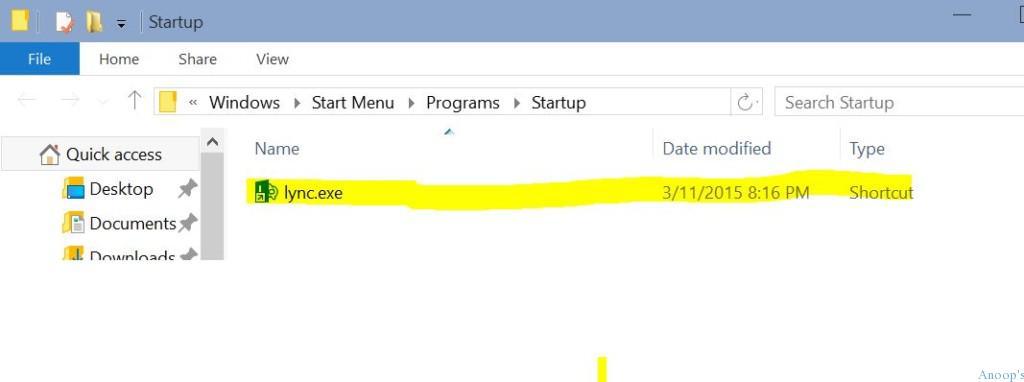

After opening the Windows Task Manager, you have to click on the More Details option.You have to first open the Windows Task Manager on your computer by pressing Control + Shift + Escape on your keyboard.

And as shown in the following instructions, accessing startup using Windows Task Manager should be fairly easy: Not only does it show you a complete list of all Startup programs, but you can also disable and enable them as needed.
#Appdata microsoft windows start menu programs startup windows 10
The primary and one of the best ways to access the Startup Programs or the Startup Folder on your Windows 10 computer is via Task Manager. In fact, Windows 10 offers two different ways for the same which includes these ones: Accessing Startup using Windows Task Manager Thankfully, if you want to enable and disable startup programs in Windows, then you can also find other ways to do so. While accessing the Windows 10 Startup folder within the File Explorer is quite easy and simple, managing the programs is not the easiest with the same. Inside the Windows Run window, you can type the following commands followed by pressing enter on your keyboard to open Windows 10 startup folders: All Users Startup Folder: Shell:common startupĬurrent User Startup Folder: Shell:startup.First, open up Windows Run on your computer by pressing Windows Key + R on your keyboard.But if you are not able to access these folders using File Explorer in Windows due to certain reasons, then you can also access them using Windows Run by following these steps: Within these locations, you can simply add or remove any programs that you want or don’t want to be launched when your computer boots up. Once you are in here, you can simply click on the address bar and enter the following addresses to open the Windows 10 startup folders: All Users Startup Folder: C:\ProgramData\Microsoft\Windows\Start Menu\Programs\StartUpĬurrent User Startup Folder: C:\Users\\AppData\Roaming\Microsoft\Windows\Start Menu\Programs\Startup.To access the Windows 10 startup folder using File Explorer, you have to first open the File Explorer by pressing Windows Key + E on your keyboard.This can be done using File Explorer in Windows as shown here: And even though Windows 10 has removed the startup folder from the Start Menu, you can still access it quite easily. Accessing the Startup Folder in Windows 10Īfter learning these two important points regarding the startup folder in Windows 10, you would want to access the same right away. As a result, while some programs will be started for all users of a computer on boot, other programs will launch only for selected users on a computer during boot. While the first startup folder in Windows is made for all the users or for the All Users folder, the other one is made for the current user or for the Current User folder. Windows 10 uses two different startup folders at the same time since these are made for different users. This primarily includes the fact that Windows 10 has two different startup folders and not a single one. Other than changing the Windows Start Menu design, newer versions of Windows like Windows 10 also have some internal changes to the Windows Startup folder. Due to this, you have to use different methods for accessing the Startup Folder in newer Windows versions like Windows 10 you will see down below in this tutorial. But because of the changed Start Menu design introduced in Windows 8, the Startup Folder was removed from the Windows Start Menu. This allowed the users to easily check all the programs which get started on the boot. If you are coming from older versions of Windows like Windows 95, Windows 98, Windows XP, Windows Vista, or Windows 7, then you may remember the Startup folder being present in the Windows Start Menu. And while we are here with a complete instructional tutorial for the same, there is still a lot that you should know before you go ahead and access the Windows 10 startup folder which includes the following instructions: Startup Folder Present in the Windows Start Menu

Now that you have a pretty good general idea about the Windows 10 startup folder and its importance, the chances are that you would also want to access the same on your computer. How do you Access the Windows 10 Startup Folder? What Programs Should be Added to Startup in Windows 10?.Why Should you Manage the Startup Folder in Windows 10?.Windows 10’s Startup Folder Launch Order.Accessing Startup using the Windows Settings.Accessing Startup using Windows Task Manager.Accessing the Startup Folder in Windows 10.Startup Folder Present in the Windows Start Menu.How do you Access the Windows 10 Startup Folder?.


 0 kommentar(er)
0 kommentar(er)
